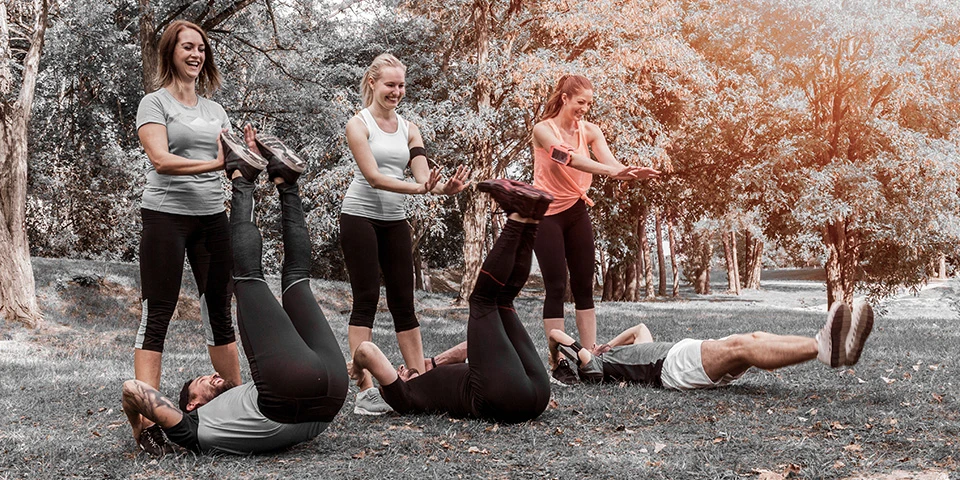Interval training, characterized by alternating periods of high-intensity effort and recovery, has long been recognized for its efficiency in improving cardiovascular fitness and overall health. Recent studies have further explained the multifaceted benefits of this training approach, reinforcing its application across various levels of physical fitness and athletic needs.
Proven Benefits of Interval Training
Scientific research has consistently demonstrated the diverse benefits of interval training:
- Improved Cardiovascular Health: Enhances heart function and circulation.
- Increased Metabolic Rate: Boosts metabolism for several hours post-exercise, aiding in weight management.
- Enhanced Muscular Capacity: Improves muscle’s ability to generate force.
- Flexibility in Training: Can be customized for any fitness level, using any form of exercise.
- Time Efficiency: Offers significant health benefits in shorter sessions compared to moderate intensity continuous training.
- Mental Endurance and Focus: Develops mental toughness and focus through challenging workout segments.
Recent Studies
Study by Zouhal et al. (2024)
The systematic review by Zouhal et al. delves into the effects of interval training with active versus passive recovery on physical fitness and physiological adaptations. The study concluded that both recovery modes significantly enhance physical fitness metrics such as maximal aerobic velocity and physiological parameters like VO2max and lactate threshold, across both trained and untrained individuals. This study was comprehensive, involving multiple age groups and athletic backgrounds, highlighting the universal applicability of interval training.

Sample Interval Training Programme
This interval training programme incorporates specific exercises tailored for a variety of fitness levels, from beginners to advanced athletes. The programme is designed to improve cardiovascular health, increase strength and endurance, and can be modified depending on the individual’s fitness goals and capabilities.
Warm-Up (10 minutes)
Start every session with a gentle warm-up to increase heart rate and prepare the muscles for intense activity.
- 3 minutes of light jogging or brisk walking.
- 2 minutes of dynamic stretching (leg swings, arm circles).
- 5 minutes of specific warm-up activities performed for 3 rounds of 20 seconds each with 10 seconds rest:
- Jumping jacks
- High knees
- Butt kicks
High-Intensity Intervals (20 minutes)
This segment consists of 10 rounds of alternating high-intensity exercises with recovery periods.
Beginners:
- Exercise: 30 seconds of bodyweight squats or stair running.
- Recovery: 90 seconds of walking or slow pedaling on a stationary bike.
Advanced:
- Exercise: 1 minute of burpees or sprint intervals.
- Recovery: 1 minute of active jogging or moderate cycling.
Circuit Examples (Repeat circuit 3-5 times depending on fitness level)
- Burpees: 1 minute
- Active recovery (jogging or moderate cycling): 1 minute
- Mountain climbers: 1 minute
- Active recovery (jogging or moderate cycling): 1 minute
- Kettlebell swings or jump rope: 1 minute
- Active recovery (jogging or moderate cycling): 1 minute
Cool-Down (10 minutes)
Gradually bring the heart rate down and stretch to prevent blood pooling.
- 5 minutes of gradual slowing down of activity (e.g., slow jogging to walking).
- 5 minutes of static stretching focusing on major muscle groups used during the workout:
- Hamstring stretches
- Quadriceps stretches
- Calf stretches
- Shoulder stretches
Weekly Schedule
- Day 1: Interval training (as described above).
- Day 2: Rest or light activity like yoga or stretching.
- Day 3: Interval training with different exercises (e.g., replace burpees with jump squats).
- Day 4: Strength training focusing on upper body.
- Day 5: Interval training focusing on agility (e.g., ladder drills and cone sprints).
- Day 6: Active recovery or sport-specific drills if training for a sport.
- Day 7: Rest or passive activities like a leisurely walk.
This program is versatile and scalable, suitable to adapt and use with clients. Adjustments can be made based on the client’s progress, specific fitness goals, or when they need more of a challenge. It provides a comprehensive approach to improving overall physical fitness through structured and varied high-intensity interval training.
Future Directions
While interval training is highly effective, more research is needed to optimize recovery types, interval lengths, and frequency for specific health outcomes and populations. The adaptability of interval training protocols allows for ongoing refinement and customization, ensuring continued relevance in sports science and health promotion.
References
- Zouhal, H., Abderrahman, A.B., Jayavel, A. et al. Effects of Passive or Active Recovery Regimes Applied During Long-Term Interval Training on Physical Fitness in Healthy Trained and Untrained Individuals: A Systematic Review. Sports Med – Open 10, 21 (2024). Click here to review the full research article
- Rodríguez-Gutiérrez E, Torres-Costoso A, Saz-Lara A, et al. Effectiveness of high-intensity interval training on peripheral brain-derived neurotrophic factor in adults: A systematic review and network meta-analysis. Scand J Med Sci Sports. 2024; 34:e14496. Click here to review the full research article
Become an Interval Training Coach
Elevate your fitness regime and coaching capabilities with the TRAINFITNESS T3 High-Intensity Interval Training Programmes. Drawing upon the latest scientific insights highlighted in our comprehensive review of interval training benefits, this programme harnesses the proven effectiveness of HIIT to boost cardiovascular health, increase metabolic rate, and enhance muscular capacity. Ideal for personal trainers seeking to deliver cutting-edge, results-driven training sessions, our programme incorporates a variety of high-intensity exercises paired with strategic recovery periods to maximise client outcomes. Explore how our T3 programmes can transform your training approach by visiting the TRAINFITNESS T3 HIIT Programmes page. Join us to unlock the full potential of interval training, guided by science and powered by performance.
T3 High Intensity Interval Training (HIIT) Coaching – In-Person, Live-Virtual & Distance Study

